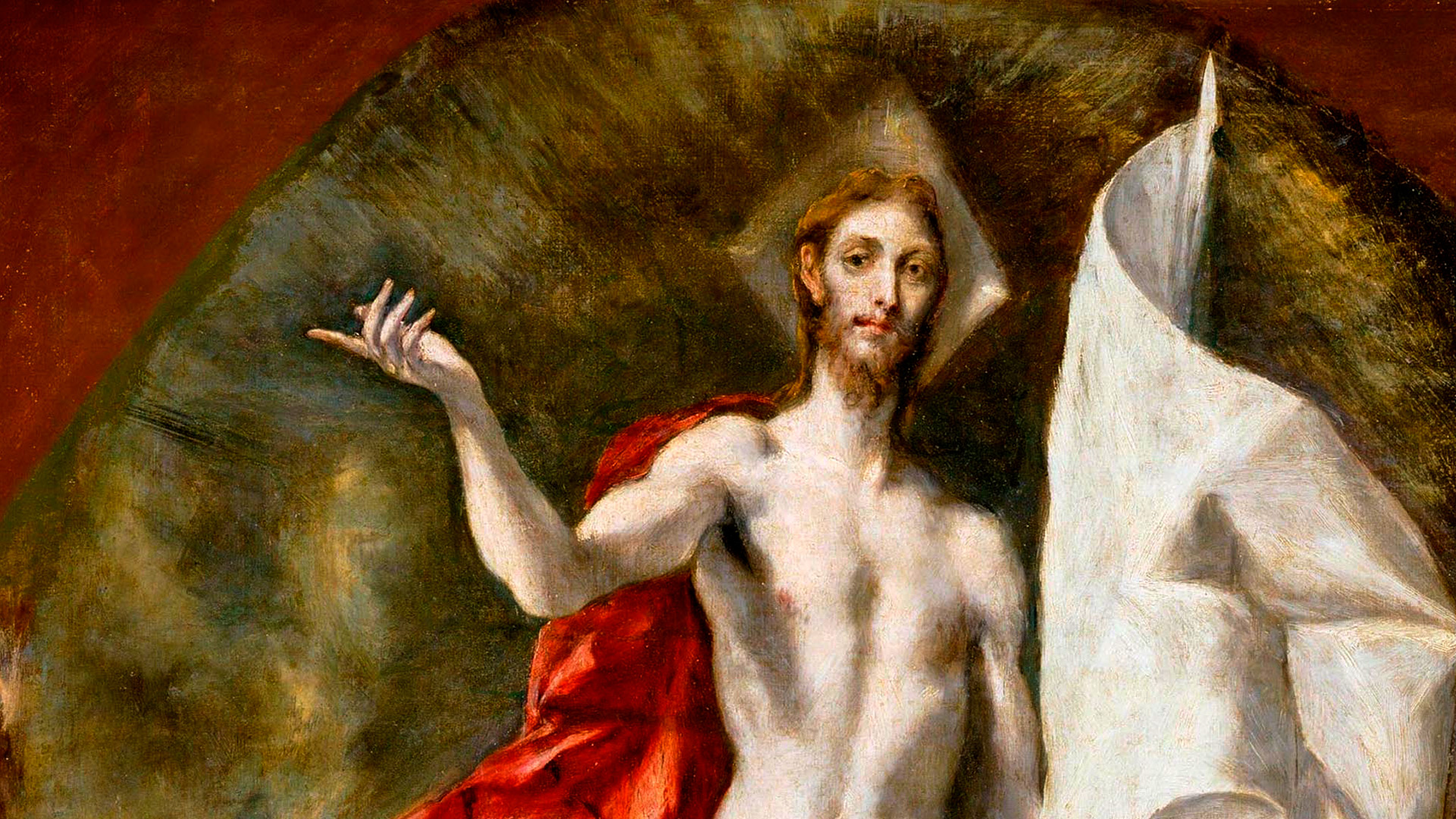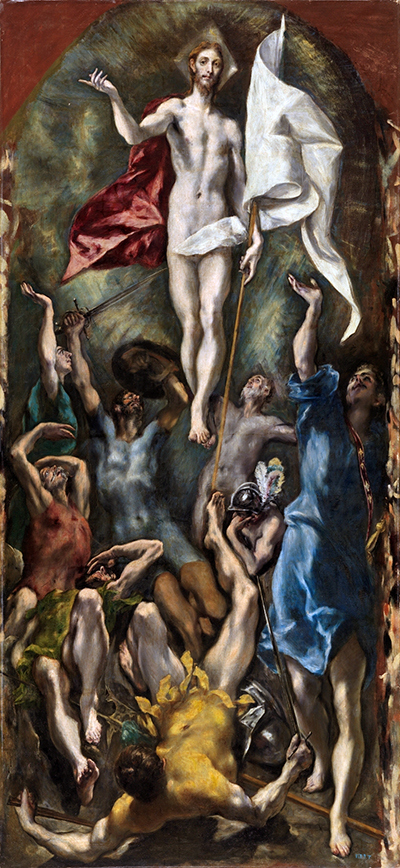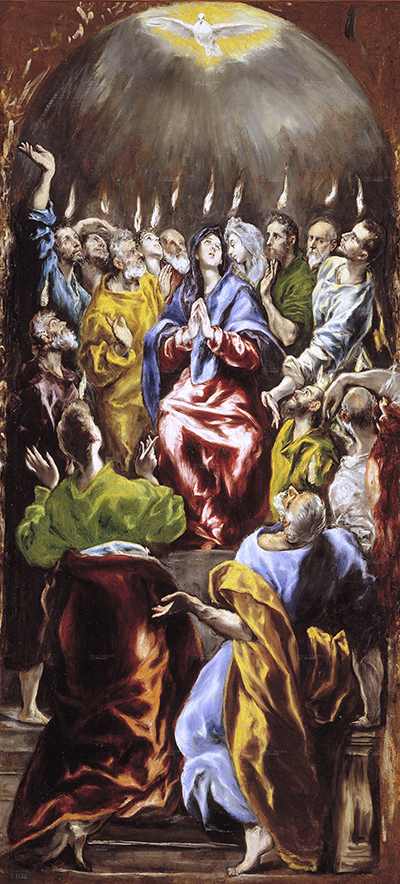
Newton’s third law of motion states that for every action there is an equal and opposite reaction. If you’ve ever watched a rocket launch before, it’s the reason there’s such a gigantic plume of exhaust. As the shuttle thrusts upward, the engines push an incredible amount of vapor fumes downward.
Long before Newton’s law revolutionized the field of mechanics, the gospel author Luke perceived an action and reaction in the event of Jesus’s resurrection. He recognized that the same resurrection power that raised Christ from the dead also thrust Christ’s disciples in a bold mission to the ends of the earth.
El Greco’s Vision of Resurrection Power

The Resurrection by El Greco, 1596–1600,
Museo del Prado, Madrid.
The sixteenth-century artist El Greco portrayed this awe-inspiring connection in a pair of works painted for the Colegio de Doña Maria in Madrid. El Greco’s The Resurrection renders the climax of Luke’s gospel as the resurrected Christ bursts from the grave. The soldiers’ limbs, weapons, and bodies are thrown back by the explosive force, and Jesus is portrayed levitating mid-air.
The painting seems to capture the brief moment before Jesus, robed in a righteous cape and waving a flag of victory, launches into the heavens. Although Luke clarifies in Acts that forty days passed between Christ’s resurrection and ascension, El Greco takes his cues from Luke 24 where the two events seem to collapse into one heroic triumph. All eyes look up with wonder as the resurrected Son of God ascends to his rightful throne. Jesus’s victory over death, his status as Messianic King, and his authority over the nations are all on display in the “early dawn” of that resurrection morning (Luke 24:1).
In the twin painting, Pentecost, El Greco again depicts his subjects looking upward—this time disciples instead of soldiers. But rather than watching something go up, their gaze is fixed on something coming down. While Christ’s resurrection and ascension blew back the guards at the tomb, Jesus’s followers are amazed by the descending of the Holy Spirit.
We can almost feel the “mighty rushing wind” gust through the canvas (Acts 2:2). The same Spirit who raised Jesus now fills and empowers his followers to obey his command, “You will be my witnesses . . . even to the ends of the earth” (Acts 1:8).
From Resurrection to Mission
El Greco perfectly identified the binding that holds together Luke’s gospel and the book of Acts: resurrection power. In the final chapter of Luke, Jesus demonstrated to his disciples that, according to the Scriptures, crucifixion and resurrection were absolutely necessary in order for him to “enter into his glory” (Luke 24:26, 46).
Jesus could not take his seat on the heavenly throne until he “was declared to be the Son of God in power according to the Spirit of holiness by his resurrection from the dead” (Rom. 1:4 ESV). The resurrection power that blew the stone from the mouth of the tomb also vaulted Christ into the heavens.

Pentecost by El Greco, 1596–1600, Museo del Prado, Madrid.
Significantly, that same resurrection power would produce an equal and opposite reaction: a plume of the Holy Spirit spreading the gospel to the nations. As the disciples watched Jesus ascend, he instructed, “Stay in the city until you are clothed with power from on high” (Luke 24:49 ESV). When the Holy Spirit fell, the apostles poured into the streets of Jerusalem proclaiming a resurrected Savior: “This Jesus . . . you crucified and killed by the hands of lawless men. God raised him up, loosing the pangs of death” (Acts 2:23–24 ESV).
The gospel of Luke climaxes as resurrection power achieves its purpose in heaven: the ascension of Jesus Christ to his eternal throne. The book of Acts climaxes as resurrection achieves its purpose on earth: the spread of the gospel from Jerusalem, to Judea and Samaria, and to all nations. The same force that thrust Christ into the heavens now sends us on a bold mission to the ends of the earth.
This ought to comfort our hearts. We can feel inadequate because our churches are too small, or we may feel too weak to accomplish anything bold for Christ’s kingdom. But as we stand on Easter Sunday and sing, “Christ the Lord is ris’n today, Hallelujah, Amen!” the Holy Spirit throbs within us. Brothers and sisters, as truly as Christ is raised by the power of God, you and I have been filled with that same power!
The Surprising Effects of Resurrection Power
With resurrection power, denying Peters become passionate preachers winning the lost to repentance and faith. With resurrection power, fearful disciples become missionaries scattered by persecution “preaching the Word” (Acts 8:4). With resurrection power, murderous Pauls become ambassadors of the enthroned Christ, proclaiming his glory to the entire inhabited world.
The same resurrection power that inspires evangelism, preaching, and disciple making also inspires giving. It turns selfish sinners into generous givers for the sake of the mission: “And with great power the apostles were giving their testimony to the resurrection of the Lord Jesus. . . . As many as were owners of lands or houses sold them and brought the proceeds of what was sold and laid it at the apostles’ feet” (Acts 4:33–34 ESV).
Easter ought to be the biggest giving Sunday of the year. When feeble believers experience the power of the resurrection, they become valiant givers!
None of us who live have yet seen our resurrected Savior Jesus. However, El Greco’s pair of paintings reminds us that it’s as we contribute to the spread of the gospel that we can experience his resurrection power even now. Perhaps this is part of the reason many of our churches feel powerless and our Easter hymns lack the gusto and fervor they once had. We have abandoned the mission. We need to plead with the Holy Spirit to rush once more upon us. In bold giving and bold going, may we once more experience the glory of Jesus’s resurrection through the salvation of the nations.
Chad Ashby is a pastor at College Street Baptist Church in Newberry, South Carolina, and writes regularly at After+Math. He is a graduate of Southern Baptist Theological Seminary and Grove City College. You can find him on Twitter.

